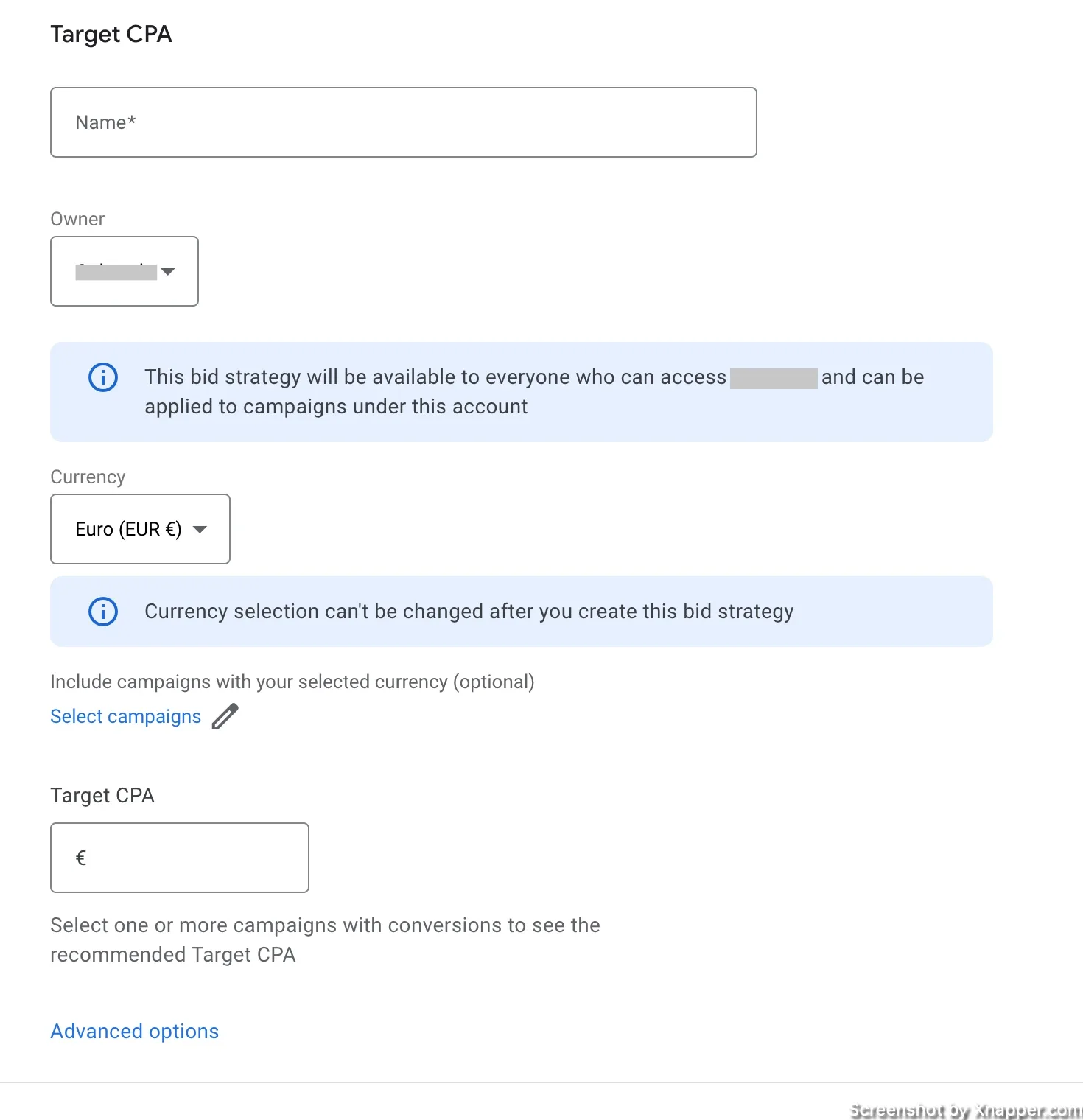
The beauty of portfolio bidding strategies lies in their ability to be both standardized for ease of implementation yet flexible enough to be customized to each advertiser’s goals. Campaigns need not operate in silos but can instead benefit from a complementary campaign approach that optimizes the overall performance of the advertising portfolio through a unified bidding technique.
Let’s take a look at portfolio bidding strategies, their benefits and limitations, and whether this is something that can benefit your business.
Benefits of Using Portfolio Bid Strategies
Portfolio bid strategies offer a powerful way for advertisers and marketers to manage bids for multiple campaigns simultaneously. By consolidating individual campaign strategies into one cohesive approach, portfolio bid strategies enable users to achieve broader performance goals efficiently and effectively. These strategies harness the power of aggregated data to make better-informed bidding decisions across various campaigns, which often results in improved performance and convenience.
Sharing data signals across campaigns
If you’re running campaigns on automated bidding strategies, you know that data is very important. Well, having several campaigns under the same portfolio bid strategy allows it to share data, boosting performance even more.
Leveraging machine learning
Portfolio bid strategies adjust bids intelligently based on real-time data. By leveraging machine learning and other sophisticated technologies, these strategies can predict the best bid to meet or exceed the targeted performance metrics, whether it’s cost per acquisition (CPA) or return on ad spend (ROAS). This automatic adjustment not only saves time but also reduces the margin of error that is often associated with manual bidding.
Working towards a common goal
Portfolio bid strategies can be particularly beneficial in instances where there is overlap in keywords and target audiences across campaigns. Unlike standard strategies that operate on a single-campaign level, portfolio strategies consider aggregate performance, which helps avoid internal competition for bids and ensures a harmonious approach to achieving collective business goals.
Allows to control CPC
This is an important one. When you’re using automated bidding strategies in your campaigns, you don’t get to set CPCs, right? You can choose a CPA goal, and then Google will determine the bid on its own. This is why you might see very high CPCs when you start out. If you use a portfolio bid strategy, you can set the CPA, but you can also specify the CPC limit. This means Google will not be bidding higher than what you specified, even with an automated bidding strategy.
Great when paired with shared budgets
Since portfolio bid strategies work towards the same goal across several campaigns, combining them with a shared budget makes them even more efficient, especially if your budget is not that big. Shared budgets can be optimized to distribute funds toward the campaigns that are most likely to achieve the desired performance, which enhances the overall return on investment (ROI).
Limitations of Portfolio Bid Strategies
There’s rarely a feature that has only benefits and no drawbacks or limitations. Although just a few, they are still worth mentioning.
Campaigns with different goals
You should not use portfolio bid strategies for campaigns with different goals. As I said, the strategy works if all the campaigns have the same goal, say, a sale or a lead. However, you can use a portfolio bidding strategy even for one campaign. It will allow you to better control your CPCs.
Overlooked campaigns
Google might optimize toward the best-performing campaigns while overlooking the others. This can be solved by creating a new portfolio bid strategy and assigning those campaigns. But you have to monitor that performance in order to spot it constantly.
Always-on keywords
If you have keywords that you need to be bidding always, for some business reasons, portfolio bid strategy might not be for you. It tends to favor performing keywords, and that means that some might not get impressions at all.
Types of Portfolio Bid Strategies
Portfolio Bidding Strategies are predefined approaches. You can’t create a custom bidding strategy. For example, there is no manual CPC bidding strategy there.
- Target CPA (Cost Per Acquisition): Aims to get as many conversions as possible at a specified acquisition cost.
- Target ROAS (Return on Ad Spend): Focuses on driving revenue by targeting a specific return percentage on the advertiser’s spend.
- Maximize Clicks: This strategy is designed to capture the maximum number of clicks within a given budget.
- Maximize Conversions: Seeks to get the most conversions for your budget without targeting a specific CPA.
- Maximize Conversion Value: Similar to the above, it just focuses on increasing conversion value.
- Target Impression Share: Aims to achieve a desired impression share within the market, ensuring visibility in user searches.
Each type of portfolio bid strategy serves different needs depending on your campaign objectives, risk tolerance, and desired level of control over the bidding process. You should assess your goals and resources to choose the most suitable strategy or combination of strategies for your portfolio.
Setting Up Portfolio Bid Strategies
Creating a portfolio bid strategy is easy. What’s harder is to define goals and targets and choose appropriate campaigns. I assume you’ve done it, so let’s how to create a strategy in your Google Ads account.
Head into Tools & Settings > Shared library > Bid strategies. Click to add a new strategy, and choose your bidding.

Let’s use a more common target CPA bidding strategy.

The name can be anything you want, especially if you don’t plan to have many bid strategies. Otherwise, enter something descriptive, like the name of the objective and CPA price. For example, “Sales – CPA $50”.
The owner is your account, but if you have an MCC (My Client Center), you may want to change the owner of that bidding strategy. Google explains perfectly why the owner is important, as shown in the image above.
Enter your CPA, and you might be done. However, if you want to specify the minimum and maximum bid, click on Advanced options.

This is where you should enter the maximum bid. It’s optional but recommended. I mentioned why in the benefits section. This gives you more control over bids.
Click Save, and you will be taken back to the list of your strategies. Click your strategy and you will be taken to the performance dashboard.

This is a new strategy, so I do not show any data. But after a while, you will be able to see the aggregated data from all campaigns using this strategy.
Scroll down and expand Setting. You will be able to add campaigns to this bidding strategy or adjust CPA bidding here.
Best Practices for Implementing Portfolio Bid Strategies
When implementing portfolio bid strategies, there are several best practices to consider that align with overarching goals and ensure effective budget utilization.
Why switch at all?
There may be various reasons why you want to use portfolio bid strategies: simplify management, save time, and control bids. Ask yourself what you are trying to accomplish.
Understand Your Goals
Goals are essential for any campaign. They help you understand if you’re not wasting money. This is no different. If you have several campaigns running with the same goal, they might have different CPA. If you decide to combine them under one portfolio bid strategy, make sure that the target CPA you set is not lower than your highest CPA unless you want to be lower. This could reduce the amount of conversions, as the new target has been set.
Shared budget
If you decide to use a shared budget with your portfolio bid strategy, make sure you’re not setting it too low. Each of your campaigns has a daily budget, so if you combine 5 campaigns under the same shared budget, this budget has to be the sum of the daily budget. Otherwise, you might see a drop in traffic and conversions.
Look at data
Don’t guess. Look at the numbers. Both before switching to portfolio bidding strategy and after when you see numbers coming in. If it’s not working, go back to what you were doing before.
Experimentation
I have to mention that. Don’t use portfolio bidding strategies without testing the strategy first. Google Ads has a built-in tool for testing. Run that first. Make sure that whatever bidding strategy you choose won’t hurt your campaigns.
Regular Reviews and Adjustments
Valid for Google Ads in general. Don’t set and forget. Portfolio bidding strategies work a bit differently. Especially if you started using a shared budget or added a maximum bid limit, these could heavily impact campaign performance. Check back often at the beginning to make sure that everything is going fine.
Defining Maximum Bid Limits for Cost Control
I’ve mentioned this in the benefits section, but I would like to expand on this a bit more. Bid limits are a critical component of portfolio bid strategies, especially when controlling costs is a top priority.
This benefit is very good when it comes to automated bidding strategies. If you set it regularly, the only thing you specify is the target CPA, which means you allow Google to handle your bids. In some cases it is fine, on others you might see CPC going over $30 or even higher. In a very competitive niche, that’s normal.
Google will decrease bids when you start receiving conversions as it has a target that you specified. But that requires time and a decent amount of conversions.
With portfolio bid strategies, you can specify maximum bids and avoid those very high bids that drain your budget.
However, if you enter a low maximum bid, you might not get traffic at all. This does not change anything when it comes to auction results. Your bid is still your bid. A portfolio bidding strategy is not excluded from general auction rules.
What also might happen is that when you specify a bid cap, your ad might be shown on different search queries, resulting in different users coming to your site. This may result in less qualified leads. Or if you have a store, people might buy cheaper items.
This is why you have to monitor performance to ensure that you’re on the right path.
Locations + bid strategies
This is not a setting in the portfolio bid strategy but a strategic approach. We all know that you can create campaigns based on locations. And you can optimise them differently. Often your spend or CPA might be different per country.
Other times, you can group specific regions or countries. For example, you might have Western European countries, the UK, or Scandinavia. You might have West Coast and East Coast in the US.
For this purpose, you can create a different portfolio bidding strategy and assign it to those countries.
The biggest benefit is that portfolio bid strategies will share data and signals from these campaigns. If you have fewer conversions in one country, combining several countries under one bidding strategy might yield better results.
I share weekly tips on how to create, manage, and scale Google Ads campaigns. Subscribe to my free newsletter.
I’m also down with connecting on LinkedIn.
Or follow me on X, for some quick updates and fast insights.